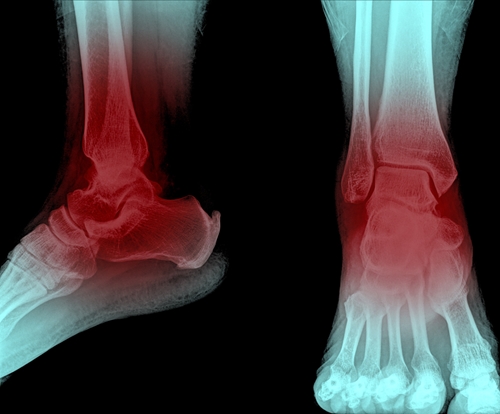
Heel pain can be debilitating.
Foot issues can be all but debilitating. The discomfort can be intense, and is centered on an area that is frequently under pressure. Simple, everyday tasks like walking to the store, getting through the workday or doing a bit of exercise become difficult, in some cases prohibitively so.
If you are experience pain that seems centered on a heel, it could be one of any number of common causes. Here are five possible culprits:
1. Stress fracture
The calcaneous, a bone that runs along your heel, has stress placed on it whenever you take a step. Over time, if this stress is repetitive and sustained, it can fracture, resulting in discomfort. Symptoms will typically include issues putting weight on the heel and pain whenever the bone is compressed.
As this issue is common among athletes who participate in running sports, treatment often involves rest and activity modification until the bone heals. In some situations, a physician may choose to immobilize the area, partially or completely, to give the foot an opportunity to repair itself.
2. Achilles tendonitis
Another issue that can be caused by chronic use, Achilles tendonitis affects the tendon that connects the heel and the lower leg. Over time, if the tendon is stressed too heavily, it can become inflamed and painful. Because this is the part of the body that allows you to lift your heel when you walk, the condition makes walking around both painful and difficult.
Treatment regimens often attempt to combat the inflammation with anti-inflammatory drugs. Physical therapy, massage therapy, ice therapy and immobilization may also be used to prevent further injury and mitigate symptoms.
3. Fat pad atrophy
The calcaneousis surrounded by a thin pad of fat that cushions it from direct impact. Over time, this buffer can wear away, leading the bone relatively more exposed. This condition is common among elderly people, as well as people who have had steroidal injections, and can cause discomfort whenever the heel strikes the ground, making walking significantly harder.
"The calcaneous is surrounded by a thin pad of fat that cushions it from direct impact."
While there are some anti-inflammatory medications that can help, there is little that can be done to restore the fat pad completely. One solution for the discomfort is to use orthotic shoe inserts, which can reduce the pain by mimicking the cushion that the pad itself provided.
4. Baxter nerve compression
The first branch of the lateral plantar nerve, otherwise known as the Baxter nerve, can become entrapped in the medial heel. This creates a condition known as Baxter nerve compression, which can cause heel discomfort, tenderness and a "pins and needles" sensation in the area. The issue is particularly common among athletes who spend a lot of time raised up on their toes, a group which includes sprinters, dancers and gymnasts. Such athletes often have strong or pronounced abductor muscles, which can in turn compress the Baxter nerve.
To treat this condition, medical professionals will often recommend regular stretching, anti-inflammatory medications or orthoses, such as Nice Stretch, which can help stabilize the area and mitigate discomfort. If these interventions are unsuccessful, surgery may be recommended, to decompress the nerve at the fascia between the abductor hallucis and quadratus.
5. Plantar fasciitis
The plantar fascia is a flat expanse of tissue that supports your arch by connecting your heels and toes. When it becomes strained, it can become weak, swollen and/or irritated. This condition makes walking, running or even standing for long periods of time uncomfortable. These symptoms tend to be the worst upon just waking up, after long stretches of exercise, or after the foot has been immobile for an extended period.
As with other heel-related issues, anti-inflammatory drugs can provide some immediate relief. Patients are also often encouraged to stretch regularly, wear orthoses like Nice Stretch, and to evaluate whether their footwear could be exacerbating the issue. In some cases, just walking around can help provide some relief.
If you experience prolonged, sudden or intense discomfort in your heel, see a medical professional as soon as possible. Many foot problems only get worse if left unchecked, so getting a diagnosis and taking action should be a top priority.
